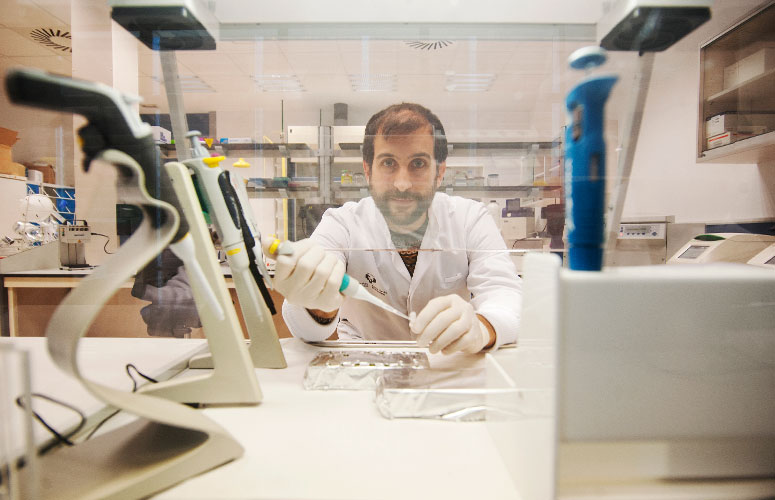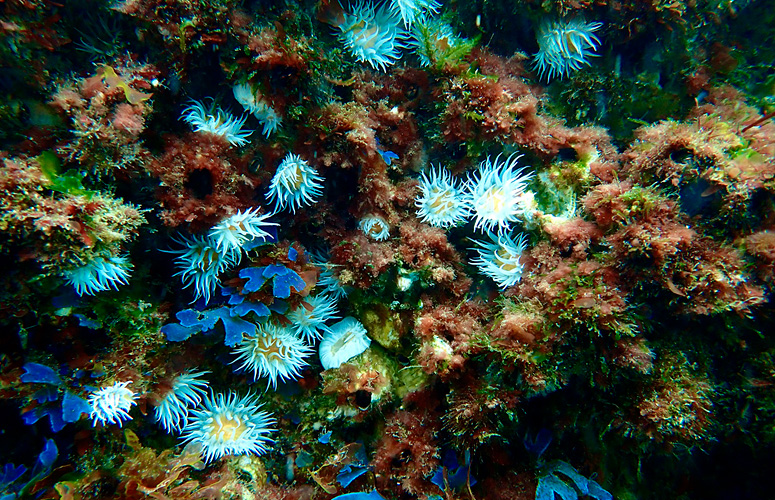A study, in which the UPV/EHU-University of the Basque Country participated, has for the first time assembled and annotated the complete genome of the raccoon dog, a species originating in East Asia but introduced into Europe where it has settled. The work will provide a reference for future evolutionary, ecological, carnivore-based studies that involve gene-disease association and chromosome architecture.
Complete genome of the raccoon dog
This species is known to be a vector for numerous diseases that can affect humans, including Covid-19
- Research
First publication date: 13/05/2021

The ongoing technological development of DNA sequencing, as well as the remarkable reduction in data production costs, have led to a boom in recent years in the sequencing of whole genomes of various organisms.
In a recent paper now published in Frontiers in Genetics, the complete genome of the raccoon dog (Nyctereutes procyonoides), a close relative of the fox (Vulpes vulpes), has been assembled and annotated for the first time. This species originated in East Asia, but due to a fur-breeding interest it has since the 1940s been introduced into Europe where it has become established. Although the most southerly populations detected so far are in France, the distribution modelling of the species indicates that the raccoon dog could colonise the Iberian Peninsula over the next 20 years. This invasive species is of great importance from a public health point of view as it is known to be a reservoir and vector of numerous diseases that can affect humans, including Covid-19.
Long, third-generation sequencing (PacBio and Oxford Nanopore Technologies) as well as state-of-the-art bioinformatics techniques for gene prediction and annotation have been used to assemble the genome. The main challenges faced by the research have been the raccoon dog’s complex chromosome structure, which is characterised by the display of unusually large telomeres and centromeres, plus the presence of a variable number of B-type chromosomes. All these elements are characterised by non-coding, repetitive DNA regions, which are very difficult to sequence and subsequently study.
The size of the genome obtained in the study is 2.39 gigabases, in which more than 27,000 genes have been identified and annotated. In addition, 39% of the assembled genome is made up of repetitive regions, although this may be an underestimate due to these complex repetitive regions. On the other hand, although the divergence between the raccoon dog and the wolf is estimated to be around 12 million years, a greater than expected similarity between the structure and composition of the genomes of the two species has been detected.
Dr Luis Javier Chueca, lead researcher in this study, considers that "the genome presented in the publication will provide a reference for future evolutionary, ecological, carnivore-based studies involving gene-disease association and chromosome architecture".
Additional information
The work was led by Luis Javier Chueca, postdoctoral researcher in the Systematics, Biogeography, Behavioural Ecology and Evolution group at the UPV/EHU, in collaboration with the Centre for Translational Biodiversity Genomics (LOEWE-TBG) and the Goethe University in Frankfurt-am-Main (Germany).
Bibliographic reference
- De novo genome assembly of the raccoon dog (Nyctereutes procyonoides).
- Frontiers in Genetics, 12: 658256.
- DOI: 10.3389/fgene.2021.658256



